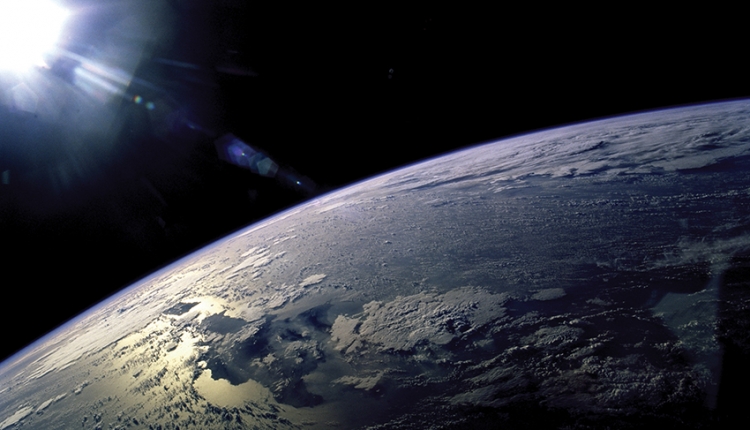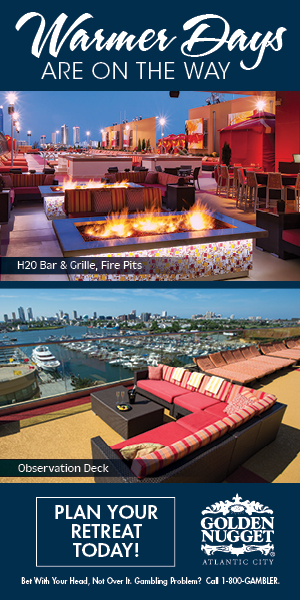
Lt. Colonel Andrew Allen’s left eye was swollen shut and useless. He had dislocated his shoulder. His voice box had been crushed. He was bleeding.
The visor of his helmet was cracked and smeared. The windshield was a mess. His parachute was sticking halfway out of its packaging. Oh, and he was covered in turkey vulture blood and guts. As he surveyed the damage the wayward bird had done to his F-X fighter jet—which had been blasting away at 550 mph just 500 feet above ground during an exercise designed to teach pilots to fly under enemy radar—Allen had to decide how he was going to land the plane and where he should do it.
In a second, he concluded that while battered, he was in good enough condition to finish the job. “The blood had stopped spurting and was just oozing,” he says. He decided that bringing the jet back to home base made more sense than attempting a compromised landing in an unfamiliar location. And he felt confident that the weapon systems officer sitting behind him wasn’t going to affect an ejection maneuver. That was a good thing, since Allen’s seat had been damaged, and such an exercise could have had catastrophic consequences. The big problem?
He might be late for dinner.
Allen had been trained to make those kinds of rapid-fire decisions under extreme duress. But there was one question he couldn’t answer. Why, when he was drenched in a stew of his own blood and the vulture’s innards, didn’t he vomit?
“I’m something of a sympathy puker,” he admits. “If somebody else throws up, I do, too. That day, I had it all together.”
Allen kept his lunch down and landed the plane, despite having a limited field of vision due to the extreme damage done to the cockpit and his visor, which had afforded him a “little slit” through which to see. It was a remarkable piece of flying, but hearing Allen describe it now, it was as if he had to perform the operation while dealing with nothing more than a smudge of pigeon crap on his windshield.
The 62-year old Allen may have been in the private sector for the past 20 years, but he spent the previous two decades as a certified American badass, flying jets for seven years and then serving on three Space Shuttle missions. He is in good enough shape today, thanks to plenty of cycling, to pass the NASA astronaut physical examination and hopes that when he hits his 70s, the space agency might just “be looking for an old guy” to send into space, as it did with 77-year old John Glenn in 1998. That he was able to bring a compromised jet back safely despite serious physical injuries and the presence of a liquefied turkey vulture speaks to his tremendous mental toughness and his all-around American hero personality.
“I think a lot of astronauts are like this,” says his sister, Catherine. “There is a humbleness about him, but there is a load of confidence, too. They couldn’t do what they do without a lot of confidence.”
On July 20, 1969, Allen and his mother, Loretta, sat on the couch watching the first lunar landing. Loretta looked at her son and asked, “Do you think you would ever want to do that?”
Allen replied quickly. “I would love it.”
But there was a problem. Wanting to do something and being able to do it are completely different things.
“I don’t think astronauts have as many detentions as I do,” he said.
Loretta looked at him and said, “If you straighten up, you’ll have a chance.”

Allen posed for this picture on the Space Shuttle Columbia’s flight deck during STS-62. Allen flew on three Space Shuttle missions: STS-46, STS-62, and STS-75.
Allen was born on August 4, 1955, the son of man who had flown torpedo bombers for the Navy during World War II. The family bounced around for several years, but eventually settled in Bucks County, and Allen graduated from Archbishop Wood HS. He played football and baseball at Wood and loved sports of all sorts. He was also extremely intelligent – perhaps too intelligent. His sister thinks that explains his propensity for detentions.
“He would get his homework done earlier than others, and he would be bored and get in trouble,” Catherine says. “That could have been part of the problem.
“He was a daredevil. That’s why he would get in trouble.”
When it came time to apply to college, Allen wanted to secure an appointment to one of the United States service academies, but his older brother Matthew, who was a student at Penn State, asked him why he wanted to go to an all-male school. Allen thought that was a good question, so he dropped the Academy dream and applied for a Navy ROTC scholarship at several schools in the Mid-Atlantic region, including Villanova, which had “one of the best Navy ROTC programs,” according to Allen.
After graduating from ‘Nova in 1977 with a degree in Mechanical Engineering, he entered the Marine Corps and spent six months learning to be a platoon leader with an eye on flying jets. His father, Charles, had exposed all five of his children to his love of the air, and Allen was the one who “took it to heart”. There was also the romantic side to it all. “After watching some John Wayne movies in high school, I decided I wanted to be a fighter pilot,” Allen says.
He trained to fly in Pensacola, where his focus and determination served him well. While other students took advantage of the various offerings of the “Redneck Riviera”, Allen stayed home and studied. Only 10 percent of his class would get to fly jets – others would pilot helicopters and cargo planes – and Allen was determined to be part of that elite group.
“Embedded in us by our father was the motto ‘Failure is not an option,’” Catherine says. “My dad was constantly learning. He got his Ph.D in aerospace engineering in his 60s and was a consultant for NASA in his 70s. That’s my brother’s option, too. It’s not that you can’t fail, because that’s how you learn. But he will always strive to succeed. He’s an incredibly high achiever.”
Allen ended up in the 10 percent and became a fighter pilot, piloting the F-4 Phantom for three years and then the F/A-18 Hornet. Allen graduated from the Top Gun program, where his work was so successful he was asked to stay on as an instructor. But he had bigger goals and in 1987 completed training at U.S. Test Pilot School in Maryland. That’s when he applied—along with more than 700 other Marines—to become an astronaut. From that group, 21 names were sent to NASA, and six of them were interviewed. They selected one.
Allen.
“There is a stress performance curve,” he explains about the process. “As people get stressed, believe it or not, their performance increases—up to a point. Then they go flying over the cliff. [NASA] looks for people who can manage stress beyond the norm.”
Allen’s first mission was aboard the Space Shuttle Atlantis, an eight-day deployment in summer 1992 that included 126 orbits of the earth and work with an Italian space crew. In March 1994, he flew a 14-day mission aboard the Space Shuttle Columbia, and two years later participated in a 16-day operation as part of the crew of the Columbia, which logged 6.5 million miles during its journey.

Allen, seated left, with the crew of STS-46.
The entire process awed Allen, who remembers his first time being strapped into the Shuttle, with every imaginable family member and friend watching in the distance and the countdown commenced.
“You realize it’s a little too late to change your mind,” Allen says. “You have to fly. It’s an adventure. You never know how it’s going to turn out.”
Allen describes the first time the solid rocket boosters fell away on his first flight as “one of the most memorable events that happened in my life.” He remembers the awesome power of the launch and the changes his body went through when zero gravity hit. Allen certainly enjoyed the camaraderie and helped to bond with his fellow astronauts on the third mission by bringing a bag of soft pretzels onto the Shuttle. Despite his current Florida address, Allen is a Philly guy, and when he returns to town, his first meal is always a cheesesteak.
From space, Allen saw the earth’s rivers and deltas, continental boundaries and even man-made spectacles like the Great Wall, the Pyramids and the Atlanta airport. That was cool, but it didn’t match the sense of wonder associated with being in space.
“It was fascinating looking out at the stars,” Allen says. “Every millimeter of space is filled with stars. You can see the wisps of the Milky Way galaxy and see the vastness of what’s out there. It gives you a feeling of insignificance, like being one grain of sand on all the beaches of the earth.”
After Allen’s third Shuttle mission, he moved into administration within NASA, a move that wasn’t exactly thrilling to him. That, coupled with the emotional responses his daughters Jessica and Meredith had in response to his final flight (Apollo 13 had just hit theaters), led him to consider a career in the business world, an arena that had always intrigued him. Since 1997, he has earned an MBA and worked in a collection of firms, including Honeywell. Since 2006, he has run Aerodyne Industries—a company founded by his father—employing more than 200 people and working with NASA. While he still dreams a bit of outer space, Allen is happy working to assist the space agency reach its goals.
That doesn’t mean he still doesn’t have a little bit of that daredevil in him. On the day of the solar eclipse, while the rest of us were peering at the phenomenon through protective glasses, what was Allen doing? He was driving a Corvette at top speeds on a test track in Bowling Green, KY, into the darkness and back out.
In other words, he’s still a badass.

